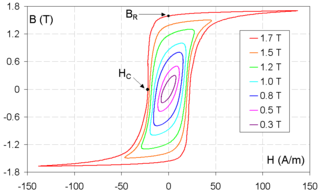
Coercivity, also called the magnetic coercivity, coercive field or coercive force, is a measure of the ability of a ferromagnetic material to withstand an external magnetic field without becoming demagnetized. Coercivity is usually measured in oersted or ampere/meter units and is denoted HC.
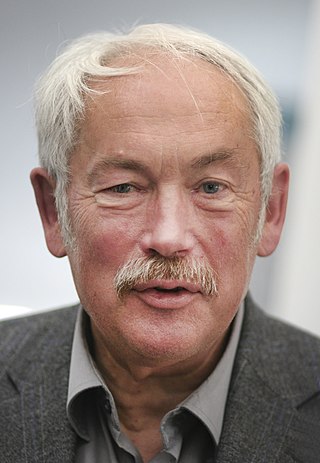
Peter Andreas Grünberg was a German physicist, and Nobel Prize in Physics laureate for his discovery with Albert Fert of giant magnetoresistance which brought about a breakthrough in gigabyte hard disk drives.
Exchange bias or exchange anisotropy occurs in bilayers of magnetic materials where the hard magnetization behavior of an antiferromagnetic thin film causes a shift in the soft magnetization curve of a ferromagnetic film. The exchange bias phenomenon is of tremendous utility in magnetic recording, where it is used to pin the state of the readback heads of hard disk drives at exactly their point of maximum sensitivity; hence the term "bias."

Helimagnetism is a form of magnetic ordering where spins of neighbouring magnetic moments arrange themselves in a spiral or helical pattern, with a characteristic turn angle of somewhere between 0 and 180 degrees. It results from the competition between ferromagnetic and antiferromagnetic exchange interactions. It is possible to view ferromagnetism and antiferromagnetism as helimagnetic structures with characteristic turn angles of 0 and 180 degrees respectively. Helimagnetic order breaks spatial inversion symmetry, as it can be either left-handed or right-handed in nature.
Superferromagnetism is the magnetism of an ensemble of magnetically interacting super-moment-bearing material particles that would be superparamagnetic if they were not interacting. Nanoparticles of iron oxides, such as ferrihydrite, often cluster and interact magnetically. These interactions change the magnetic behaviours of the nanoparticles and lead to an ordered low-temperature phase with non-randomly oriented particle super-moments.
Erich Peter Wohlfarth was a theoretical physicist. He is known for his work in magnetism, in particular the Stoner–Wohlfarth model he developed together with his teacher E.C. Stoner.
Stuart Palmer FREng, also known as S. B. Palmer, is the honorary secretary of the Institute of Physics, and was the deputy vice-chancellor of the University of Warwick between 1999 and 2009. He is an emeritus professor of physics at Warwick who has worked in condensed matter physics and engineering physics and has extensively exploited the technique of ultrasound.
In physics, the Landau–Lifshitz–Gilbert equation, named for Lev Landau, Evgeny Lifshitz, and T. L. Gilbert, is a name used for a differential equation describing the precessional motion of magnetization M in a solid. It is a modification by Gilbert of the original equation of Landau and Lifshitz.
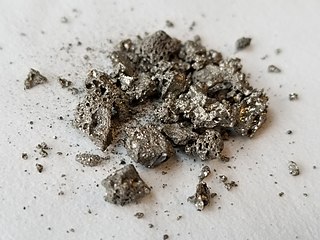
Cobalt(II) selenide is an inorganic compound with the chemical formula CoSe. The mineral form of this compound is known as freboldite. Similar minerals include trogtalite (CoSe2) and bornhardtite (Co2+Co3+2Se4).
A domain wall is a term used in physics which can have similar meanings in magnetism, optics, or string theory. These phenomena can all be generically described as topological solitons which occur whenever a discrete symmetry is spontaneously broken.

An exchange spring magnet is a magnetic material with high coercivity and high saturation properties derived from the exchange interaction between a hard magnetic material and a soft magnetic material, respectively.

In condensed matter physics, an Arrott plot is a plot of the square of the magnetization of a substance, against the ratio of the applied magnetic field to magnetization at one fixed temperature(s). Arrott plots are an easy way of determining the presence of ferromagnetic order in a material. They are named after American physicist Anthony Arrott who introduced them as a technique for studying magnetism in 1957.
Superparamagnetic relaxometry (SPMR) is a technology combining the use of sensitive magnetic sensors and the superparamagnetic properties of magnetite nanoparticles (NP). For NP of a sufficiently small size, on the order of tens of nanometers (nm), the NP exhibit paramagnetic properties, i.e., they have little or no magnetic moment. When they are exposed to a small external magnetic field, on the order of a few millitesla (mT), the NP align with that field and exhibit ferromagnetic properties with large magnetic moments. Following removal of the magnetizing field, the NP slowly become thermalized, decaying with a distinct time constant from the ferromagnetic state back to the paramagnetic state. This time constant depends strongly upon the NP diameter and whether they are unbound or bound to an external surface such as a cell. Measurement of this decaying magnetic field is typically done by superconducting quantum interference detectors (SQUIDs). The magnitude of the field during the decay process determines the magnetic moment of the NPs in the source. A spatial contour map of the field distribution determines the location of the source in three dimensions as well as the magnetic moment.

The Journal of Magnetic Resonance (JMR) is a monthly peer-reviewed scientific journal that publishes original research in the field of magnetic resonance, including nuclear magnetic resonance, electron paramagnetic resonance, magnetic resonance imaging, magnetic resonance spectroscopy and nuclear quadrupole resonance. Since 2021, its editor-in-chief has been Tatyana Polenova of the University of Delaware. According to the Journal Citation Reports, it has an impact factor of 2.624. Authors can pay a fee to have their articles published as open access.
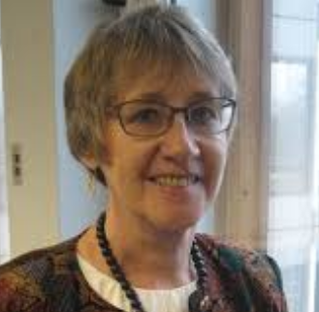
Ursula "Uschi" Steigenberger FInstP was a German condensed matter physicist and director of the ISIS neutron source. She was one of the founders of the Institute of Physics Juno Award.
Dicobalt silicide (Co2Si) is an intermetallic compound, a silicide of cobalt.
Neptunium arsenide is a binary inorganic compound of neptunium and arsenic with the chemical formula NpAs. The compound forms crystals.
Neptunium diarsenide is a binary inorganic compound of neptunium and arsenic with the chemical formula NpAs
2. The compound forms crystals.
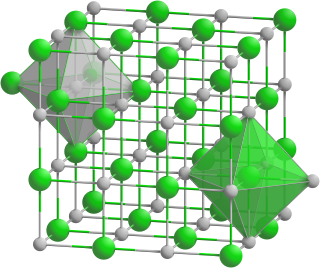
Terbium phosphide is an inorganic compound of terbium and phosphorus with the chemical formula TbP.
Ytterbium sulfide is a binary inorganic compound of ytterbium and sulfur with the chemical formula YbS.









